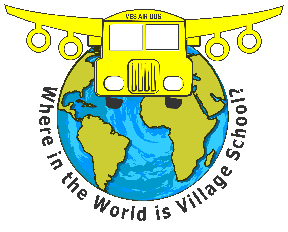We've landed in the country that straddles the equator on South America’s west coast bordering the Pacific Ocean between Colombia and Peru. Its diverse landscape encompasses Amazon jungle, Andean highlands and the wildlife-rich of the Galápagos Islands.
 |
| Compañia de Jesus cathedral |
 |
| Compañia de Jesus cathedral |
In the Andean foothills at an elevation of 2,850m, Quito, the capital, is known for its largely intact Spanish colonial center, decorated with 16th- and 17th-century palaces and churches including the ornate Compañía de Jesús cathedral.
Capital: Quito Largest City: Guayaquil
Currency: United States Dollar
President: Rafael CorreaPop: 15.74 million (2013) World Bank
Currency: United States Dollar
President: Rafael CorreaPop: 15.74 million (2013) World Bank
Official language: Spanish

Administrative divisions: 24 provinces (provincias, singular - provincia); Azuay, Bolivar, Canar, Carchi, Chimborazo, Cotopaxi, El Oro, Esmeraldas, Galapagos, Guayas, Imbabura, Loja, Los Rios, Manabi, Morona-Santiago, Napo, Orellana, Pastaza, Pichincha, Santa Elena, Santo Domingo de los Tsachilas, Sucumbios, Tungurahua, Zamora-Chinchipe
This country is substantially dependent on its petroleum resources, which have accounted for more than half of the country's export earnings and approximately 25% of public sector revenues in recent years.
Agriculture Products: bananas, coffee, cocoa, rice, potatoes, cassava (manioc, tapioca), plantains, sugarcane; cattle, sheep, pigs, beef, pork, dairy products, fish, shrimp and balsa wood
Agriculture Products: bananas, coffee, cocoa, rice, potatoes, cassava (manioc, tapioca), plantains, sugarcane; cattle, sheep, pigs, beef, pork, dairy products, fish, shrimp and balsa wood
Natural hazards: frequent earthquakes; landslides; floods; periodic drought and itsvolcanic activity is concentrated along the Andes Mountains; Sangay (elev. 5,230 m), which erupted in 2010, is mainland is this country's most active volcano. It's additional historically active volcanoes in the Andes include Antisana, Cayambe, Chacana, Cotopaxi, Guagua Pichincha, Reventador, Sumaco, and Tungurahua.
Fernandina (elev. 1,476 m), a shield volcano that last erupted in 2009, is the most active of the many Galapagos volcanoes. Additional historically active Galapagos volcanoes include Wolf, Sierra Negra, Cerro Azul, Pinta, Marchena, and Santiago.
Fernandina (elev. 1,476 m), a shield volcano that last erupted in 2009, is the most active of the many Galapagos volcanoes. Additional historically active Galapagos volcanoes include Wolf, Sierra Negra, Cerro Azul, Pinta, Marchena, and Santiago.
 |
| Students at a school. |
It is believed that in approximately 1,088 primary schools with an average of 1.5 teachers per school are responsible for educating
an average of 63 pupils throughout 6 grades.
The majority of schools require students to wear a uniform, but there are a few private schools that do not require uniforms. Requiring uniforms can make attending school expensive, especially at private schools. Most schools have two uniforms, one formal the other informal for physical education days.
an average of 63 pupils throughout 6 grades.
The majority of schools require students to wear a uniform, but there are a few private schools that do not require uniforms. Requiring uniforms can make attending school expensive, especially at private schools. Most schools have two uniforms, one formal the other informal for physical education days.
 |
| School Uniforms at one school. |
Girls uniforms usually consist of a skirt, polo or button-down top, white socks and black shoes for the formal uniform. And a tee shirt and sweat pants for physical education. Private schools can be much more complicated with ties, special socks and shoes.
Boys uniforms normally means dress pants and a polo top. And the physical education uniform is very similar to the girls.
 |
| A School |
 |
| Ceviche |
The cuisine is diverse, varying with altitude, and associated agricultural conditions. Pork, chicken, beef, and cuy (guinea pig) are popular in the mountainous regions, and are served with a variety of carbohydrate-rich foods, especially rice, corn, and potatoes.
Ceviche is claimed as their national dish. Stews of meat, plaintains, and root vegetables are the platos nacionales of several countries in Central America, South America, and the Caribbean: Colombian ajiaco, and the sancocho of the Dominican Republic, Colombia, and Panama.





